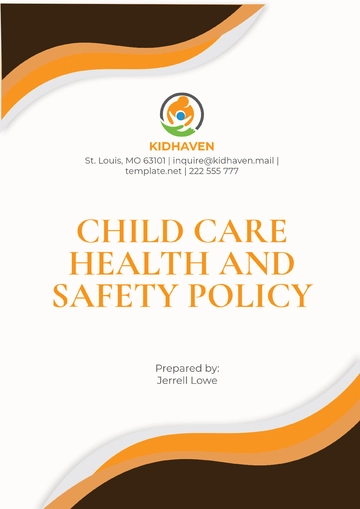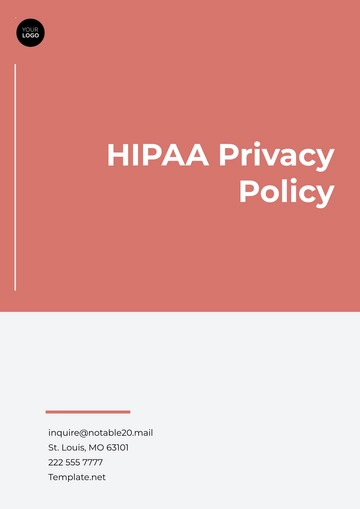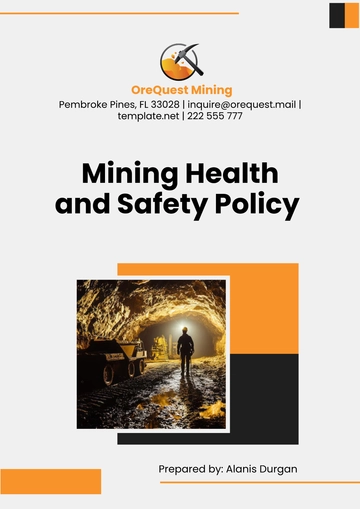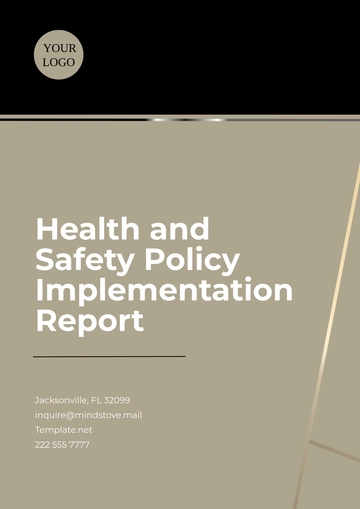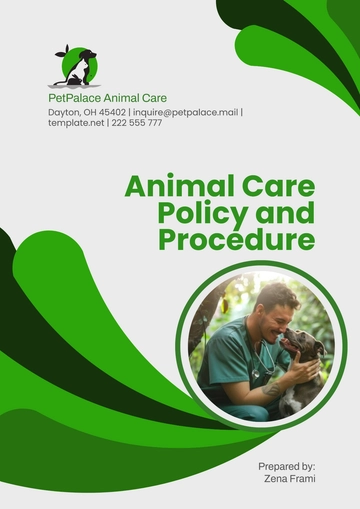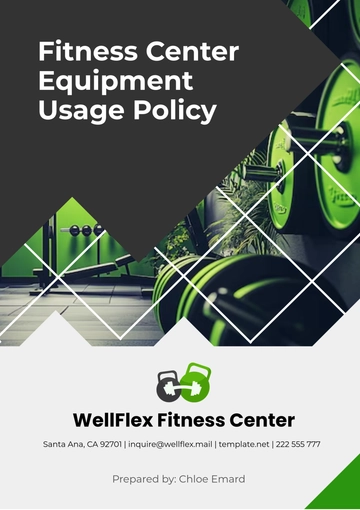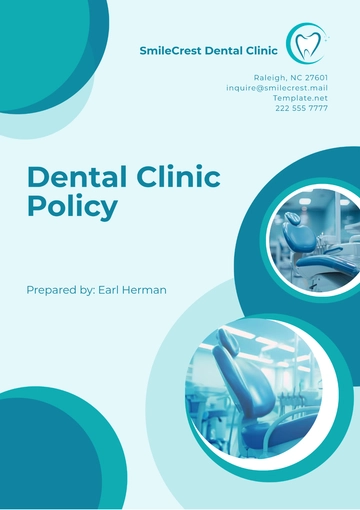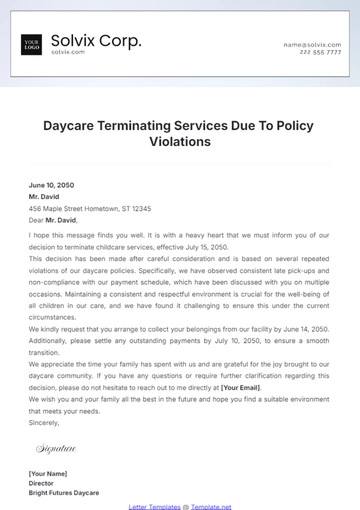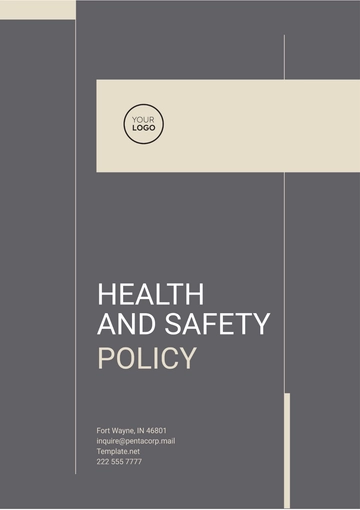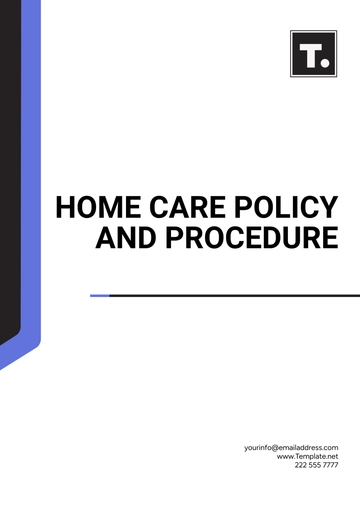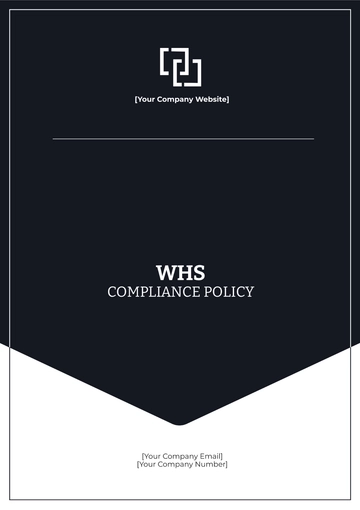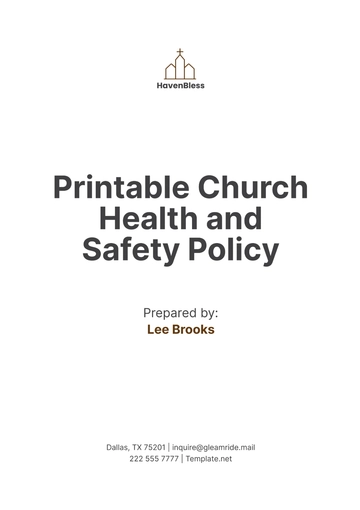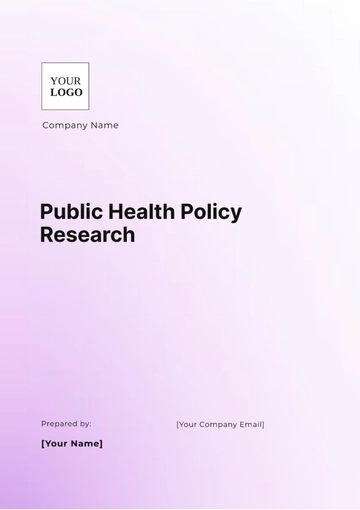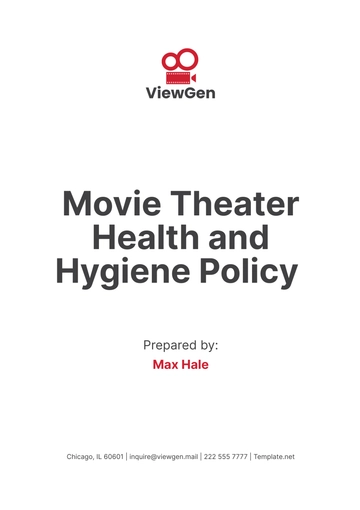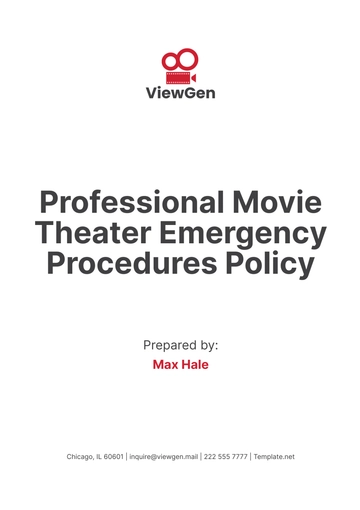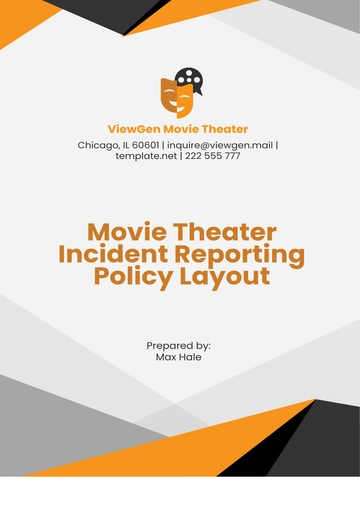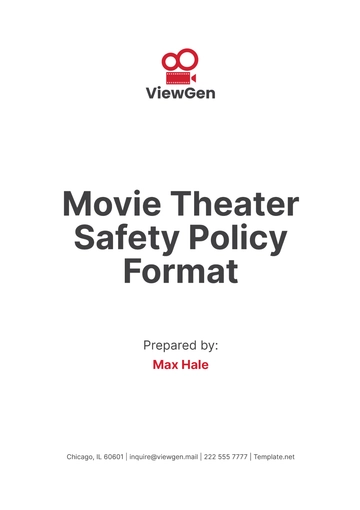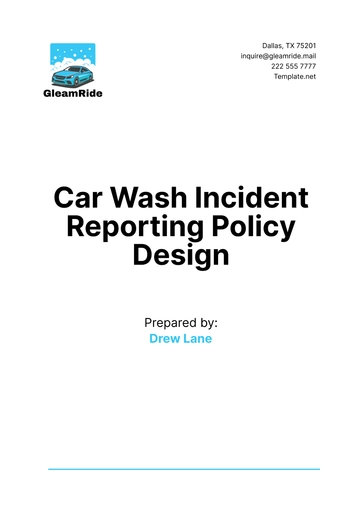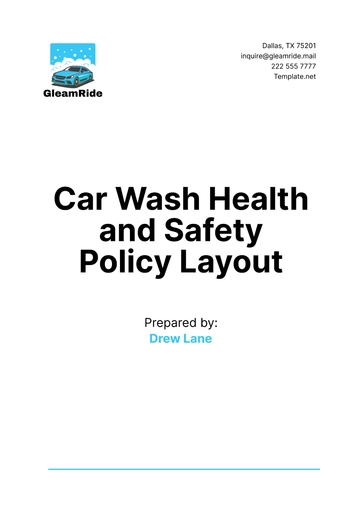Free Startup Health and Safety Policy
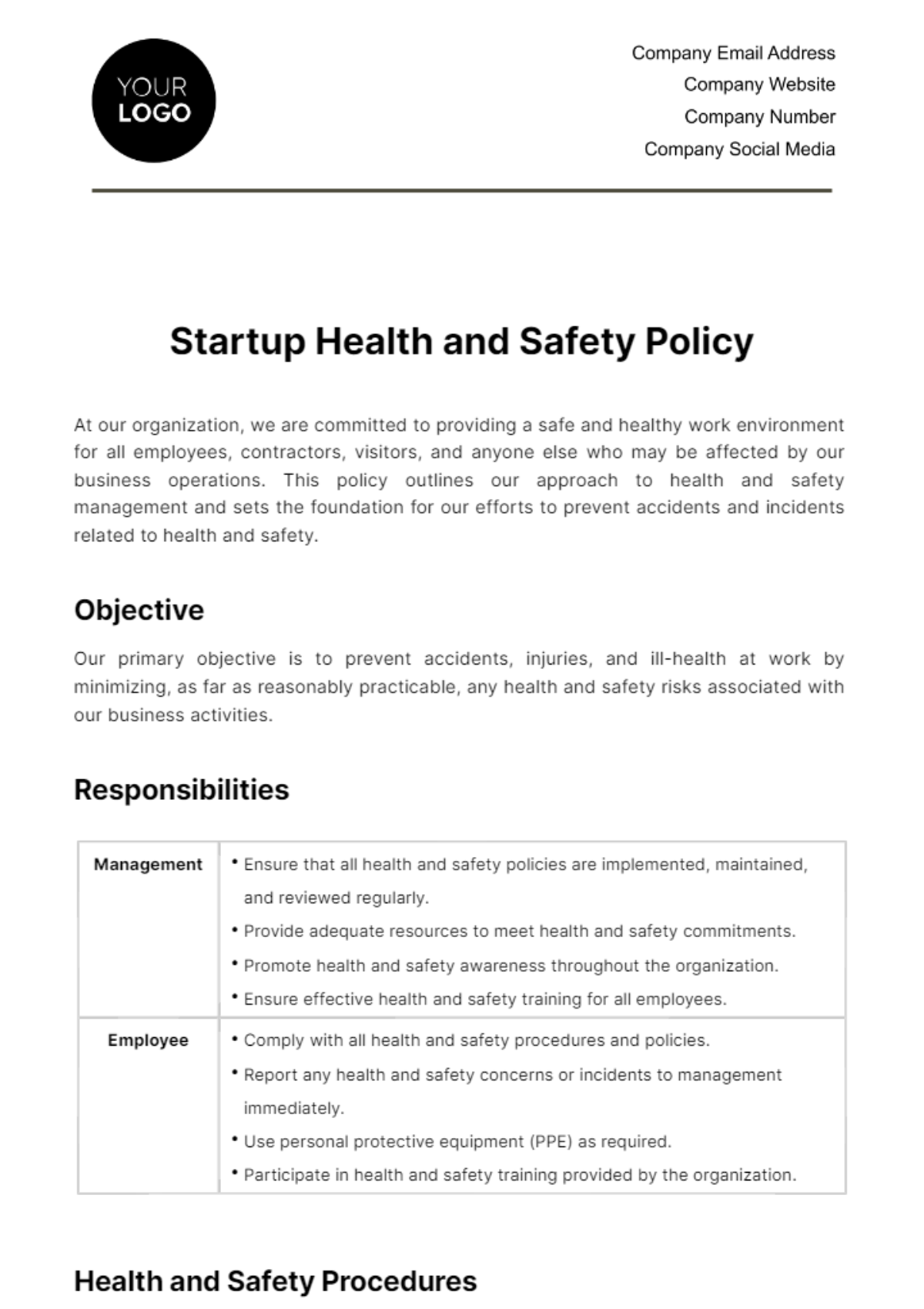
At our organization, we are committed to providing a safe and healthy work environment for all employees, contractors, visitors, and anyone else who may be affected by our business operations. This policy outlines our approach to health and safety management and sets the foundation for our efforts to prevent accidents and incidents related to health and safety.
Objective
Our primary objective is to prevent accidents, injuries, and ill-health at work by minimizing, as far as reasonably practicable, any health and safety risks associated with our business activities.
Responsibilities
Management |
|
Employee |
|
Health and Safety Procedures
A. Risk Assessment
Risk assessment is a critical component of our health and safety management system. It involves the identification, evaluation, and control of hazards that could potentially cause harm to employees or visitors to our workplace. Regular risk assessments ensure that we remain proactive in managing and mitigating risks associated with our operations.
The following risks have been identified:
Common Risks | Likelihood | Impact |
Slips, Trips, and Falls | High | Moderate |
Ergonomic Injuries | Medium | High |
Equipment-Related Injuries | Low | High |
Fire Hazards | Low | High |
Electrical Hazards | Medium | High |
Based on the risks above, we uphold the following mitigation strategies:
Slips, Trips, and Falls: Implement regular workplace inspections to identify and rectify potential hazards, such as wet floors or obstructed walkways. Ensure adequate lighting and signage are in place.
Ergonomic Injuries: Provide ergonomic assessments and adjustments to workstations to support good posture and reduce the risk of strain or injury. Offer training on proper ergonomics in the workplace.
Equipment-Related Injuries: Ensure all employees are trained on the safe use of equipment before operation. Conduct regular maintenance and safety checks on all machinery.
Fire Hazards: Maintain clear evacuation routes and ensure fire extinguishers are accessible and employees are trained in their use. Conduct regular fire drills.
Electrical Hazards: Conduct regular electrical safety inspections and ensure that all electrical installations comply with the current safety standards. Provide training on recognizing and safely responding to electrical hazards.
B. Training and Awareness
Training and awareness programs are essential for ensuring that all employees understand their health and safety responsibilities and how to carry out their roles safely. The following programs are designed to address the specific needs of our workplace and the general well-being of our employees. All employees are required to participate in these programs:
Program | Duration | Frequency |
Health and Safety Induction | 2 hours | Upon hiring |
Ergonomic Training | 1 hour | Annually |
Equipment Safety | Varies | Annually |
Fire Safety Training | 1.5 hours | Biannually |
First Aid Certification | 8 hours | Every 2 years |
C. Evacuation Plan
In the event of an emergency, it is crucial that all employees understand the evacuation plan and the steps to take to ensure their safety and the safety of others. The evacuation plan consists of several key steps:
Alarm: Upon hearing the emergency alarm, all employees should immediately cease their work activities.
Evacuation: Employees should follow the posted evacuation routes, moving calmly and orderly to the nearest safe exit. Avoid using elevators.
Assembly Points: Once safely outside, proceed to the designated assembly points. These locations are selected to ensure a safe distance from the building and facilitate headcounts.
Headcounts: Supervisors are responsible for performing a headcount to ensure all their team members are accounted for.
Stay Informed: Listen to instructions from emergency coordinators or first responders. Do not re-enter the building until it has been declared safe by the authorities.
Assistance to Others: Offer assistance to any individuals who may require help evacuating, such as those with disabilities.
D. First-Aid Arrangements
Our organization is committed to providing immediate and accessible first-aid treatment in the event of an injury or illness at work. We maintain well-stocked first-aid kits at strategic locations throughout the workplace, clearly marked and easily accessible to all employees. Additionally, we ensure that a sufficient number of staff are trained as certified first-aid responders, capable of administering basic first aid and CPR. These first-aid responders are identified within each department and their contact information is widely distributed and displayed. Regular first-aid training sessions are conducted to keep their skills up to date.
E. Reporting Accidents
In any kind of accident, it is crucial that all employees understand the following reporting procedures:
Immediate Notification: The affected employee or a witness should immediately notify their supervisor or a first-aid responder about the incident.
First-Aid Response: A trained first-aid responder administers necessary first aid and determines if further medical attention is required.
Accident Documentation: All incidents must be documented using the organization's accident report form. This includes details of the incident, any injuries sustained, and the first aid administered.
Investigation: The safety officer or designated manager will conduct an investigation to determine the cause of the accident and identify preventive measures.
Follow-Up: The HR department follows up on the wellbeing of the injured employee and manages any necessary work adjustments or compensation claims.
Review: All accident reports are reviewed regularly to identify patterns or areas for improvement in our health and safety practices.
F. Equipment and Machinery
Safe operation of equipment and machinery is paramount to preventing workplace injuries. All equipment and machinery must be operated by trained and authorized personnel only. Regular maintenance and safety checks are conducted to ensure they are in good working condition. Safety guards and emergency stop features must not be tampered with or removed. Clear operating instructions are provided, and warning labels are affixed to equipment as necessary. Employees are required to wear appropriate personal protective equipment (PPE) when operating machinery. In the event of equipment malfunction, employees must immediately cease operation and report the issue to the maintenance team.
G. Work Environment
Cleanliness: Maintaining a clean work environment is essential for safety and productivity. Workspaces should be kept free of clutter and spills cleaned up promptly to prevent slips, trips, and falls. Regular cleaning schedules are in place, and waste disposal facilities are provided throughout the workplace.
Lighting: Adequate lighting is crucial to prevent eye strain and accidents. Work areas, pathways, and emergency exits must be well-lit. Task lighting is provided where necessary to ensure that employees can perform their tasks safely and efficiently.
Ventilation: Proper ventilation is important to ensure a comfortable and healthy work environment. Our workplace is equipped with ventilation systems that are regularly maintained to provide a fresh and clean air supply. Windows and vents should be kept clear to allow for adequate air flow.
Workspace Ergonomics: Ergonomically designed workspaces help prevent musculoskeletal disorders and increase comfort. Employees are provided with adjustable chairs, desks, and computer monitors. Regular ergonomic assessments are conducted to ensure workstations are set up to suit individual needs. Employees are encouraged to take short, frequent breaks to stretch and move around during the workday.
Review and Improvement
This policy will be reviewed annually or following significant changes to operations or legislation to ensure its continuing suitability and effectiveness. We are committed to continuous improvement in our health and safety performance, through regular monitoring, evaluation, and updating of our health and safety practices.
- 100% Customizable, free editor
- Access 1 Million+ Templates, photo’s & graphics
- Download or share as a template
- Click and replace photos, graphics, text, backgrounds
- Resize, crop, AI write & more
- Access advanced editor
Unveil the Startup Health and Safety Policy Template from Template.net, your cornerstone for establishing a secure and healthy workplace. This editable and customizable template provides a comprehensive framework to articulate your startup's commitment to safety standards. Effortlessly tailor it to reflect your specific safety protocols using our AI Editor tool, promoting a culture of well-being and compliance with Template.net.
You may also like
- HR Policy
- Restaurant Policy
- Company Policy
- Accounting Policies and Procedures
- Website Policy
- Privacy Policy
- Safety Policy
- School Policy
- IT and Software Policy
- Law Firm Policy
- Construction Policy
- Interior Design Policy
- Travel Agency Policy
- Education Academic Policy
- Security Policy
- Real Estate Policy
- Expense Policy
- Software Policy
